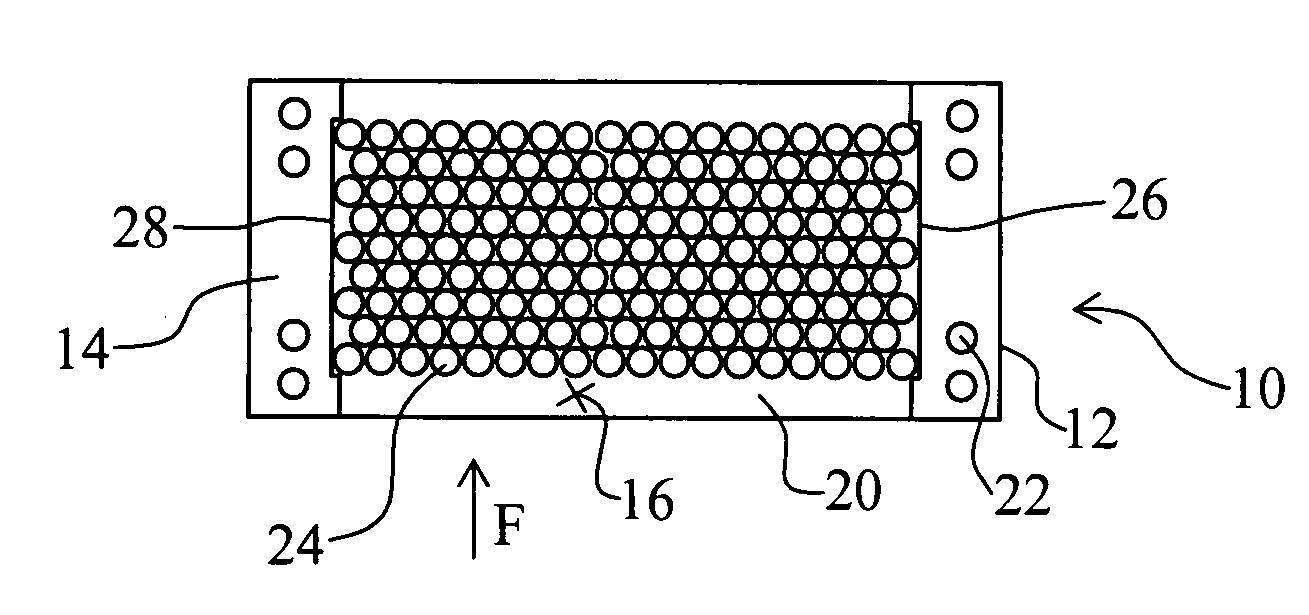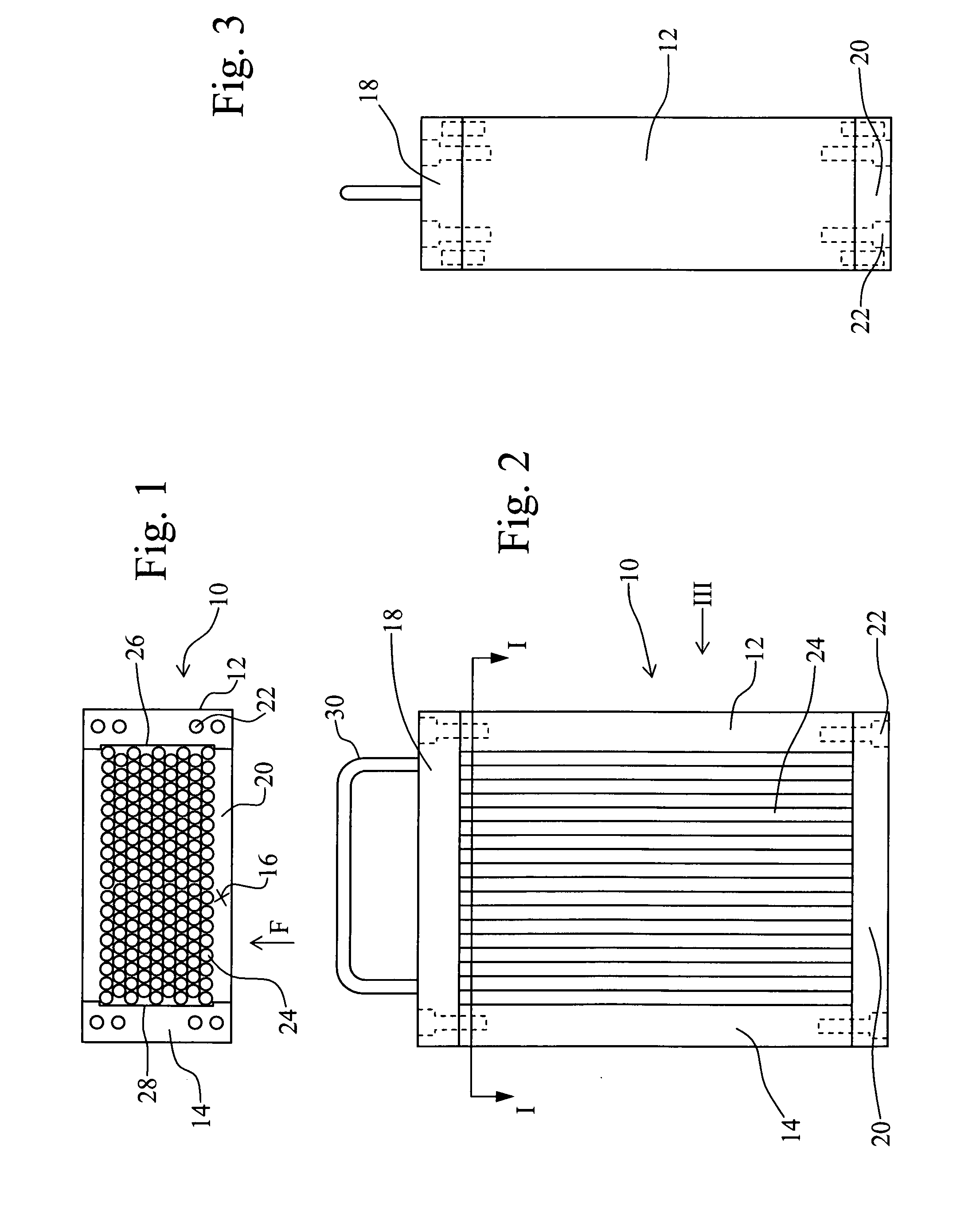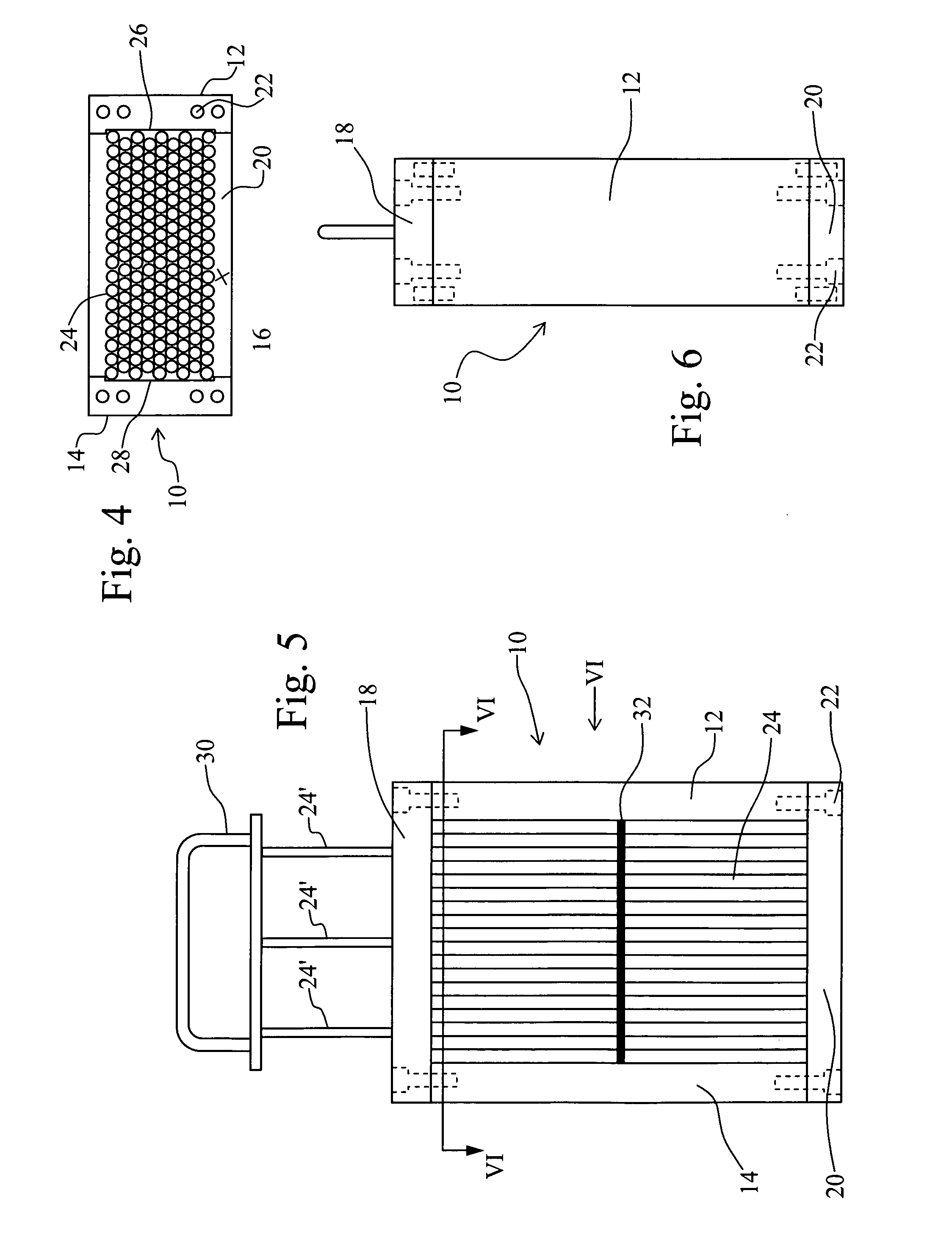Flame arrester
a technology of flame arrester and flame path, which is applied in the field of flame arrester, can solve the problems of ineffective flame arrester and inability to function, and achieve the effect of increasing the flow resistance and increasing the length of the flame path
- Summary
- Abstract
- Description
- Claims
- Application Information
AI Technical Summary
Benefits of technology
Problems solved by technology
Method used
Image
Examples
first embodiment
[0025]FIGS. 1, 2 and 3 illustrate the present invention. A flame arrester 10 comprises a pair of side walls 12, 14 which are generally parallel and define between them a flow passage 16 through which air flows in direction F. The top and bottom edges of the flow passage 16 are defined by upper and lower walls 18 and 20. These are secured to the side walls 12, 14 by bolts such as that marked at 22.
[0026]An array of parallel circular section rods 24 are provided within the flow passage 16. They are assembled transverse to the flow direction F in a hexagonal pattern such that rods in one row are offset with respect to rods in an adjacent row. Thus, the only route through the flow passage 16 is in the interstices between rods 24, a path which must deviate from a straight line parallel to the passage walls at some point. The rods 24 are generally close packed, insufficiently so as to close off air flow through the passage 16, but sufficiently close as to require significant deviation. As...
second embodiment
[0030]FIGS. 4, 5 and 6 illustrate a In general, this embodiment is identical to that described above with reference to FIGS. 1, 2 and 3. Identical reference numerals are therefore employed to denote corresponding parts.
[0031]In this second embodiment, a scraper plate 32 is provided within the array of rods 24. This scraper plate 32 includes an array of circular section apertures corresponding to the circular section rods 24. It can therefore exist within the array of rods 24. A plurality of rods 24′ are fixed at their bottom end to the scraper plate 32 and at their top end to the handle 30, passing through apertures in the upper wall 18. Thus, when the handle 30 is pulled upwardly, the scraper plate 32 is drawn through the array of rods 24, scraping deposits from the surfaces thereof as it passes. After the handle 30 has been pulled to it fullest extent and the scraper plate 32 is adjacent the undersurface of the top wall 18, the handle 30 can be depressed, moving the scraper plate...
third embodiment
[0033]the invention is shown in FIGS. 7 and 8. In this embodiment, the pair of side walls and upper and lower walls is replaced with a tube 50. This assembly would be suited to pipe line applications, the hoop giving added strength where high pressure detonations may occur. The flow path is therefore within the tube 50, an array of parallel circular rods 52 of varying length being provided within the flow path, although square or polygonal rods can be used. The rods 52 are assembled transverse to the flow direction F in a pattern where alternate rows of rods 52 are aligned and rows between these are offset by one half of the rod pitch. Thus, the only route through the flow passage is in the interstices between the rods 52, a path which must deviate from a straight line parallel to the surrounding hoop 50 at some point.
[0034]The rods 52 are generally close packed, insufficiently so as to close off air flow but sufficiently close as to require significant deviation. Where the vertical...
PUM
 Login to View More
Login to View More Abstract
Description
Claims
Application Information
 Login to View More
Login to View More - R&D
- Intellectual Property
- Life Sciences
- Materials
- Tech Scout
- Unparalleled Data Quality
- Higher Quality Content
- 60% Fewer Hallucinations
Browse by: Latest US Patents, China's latest patents, Technical Efficacy Thesaurus, Application Domain, Technology Topic, Popular Technical Reports.
© 2025 PatSnap. All rights reserved.Legal|Privacy policy|Modern Slavery Act Transparency Statement|Sitemap|About US| Contact US: help@patsnap.com



